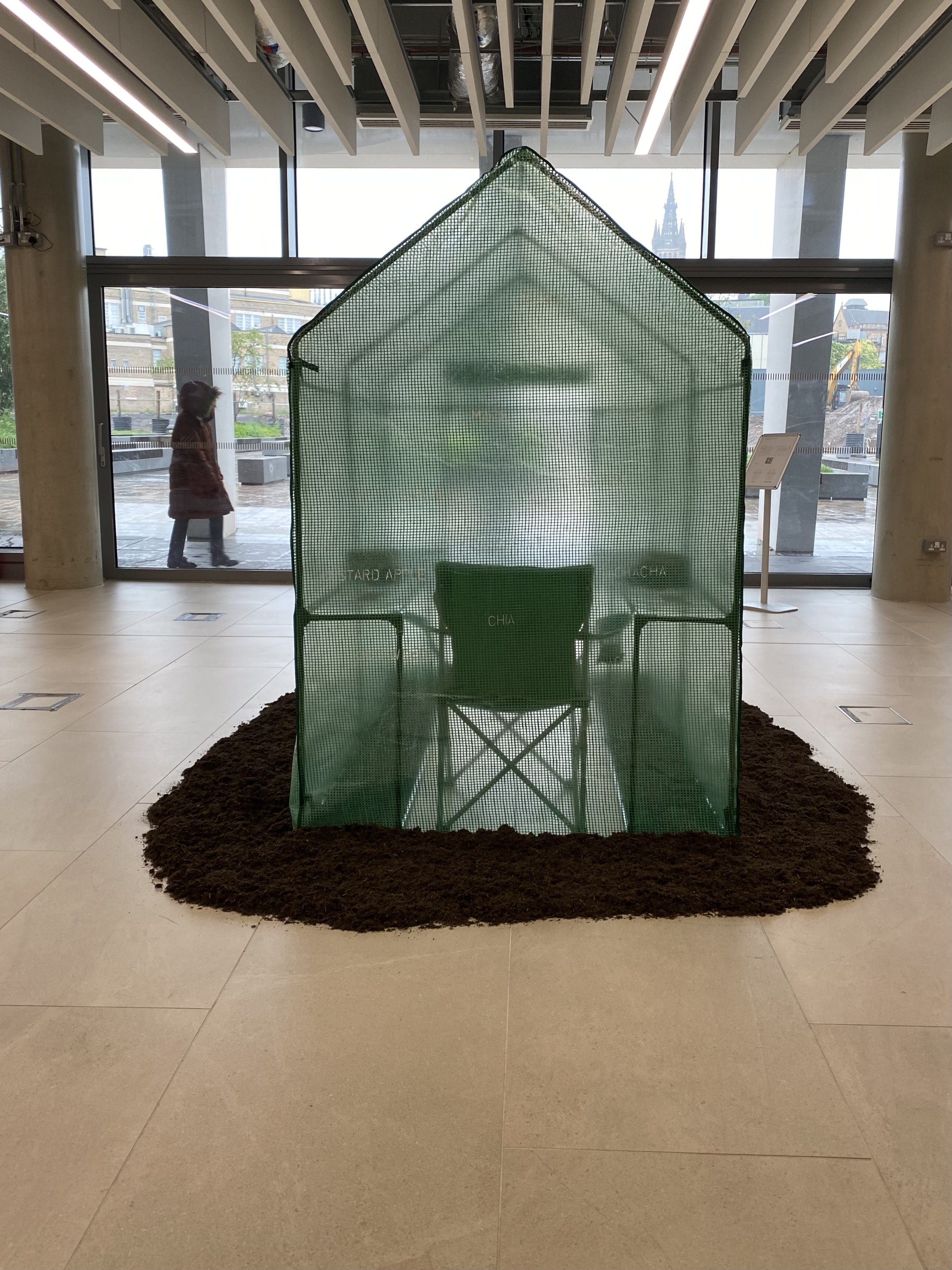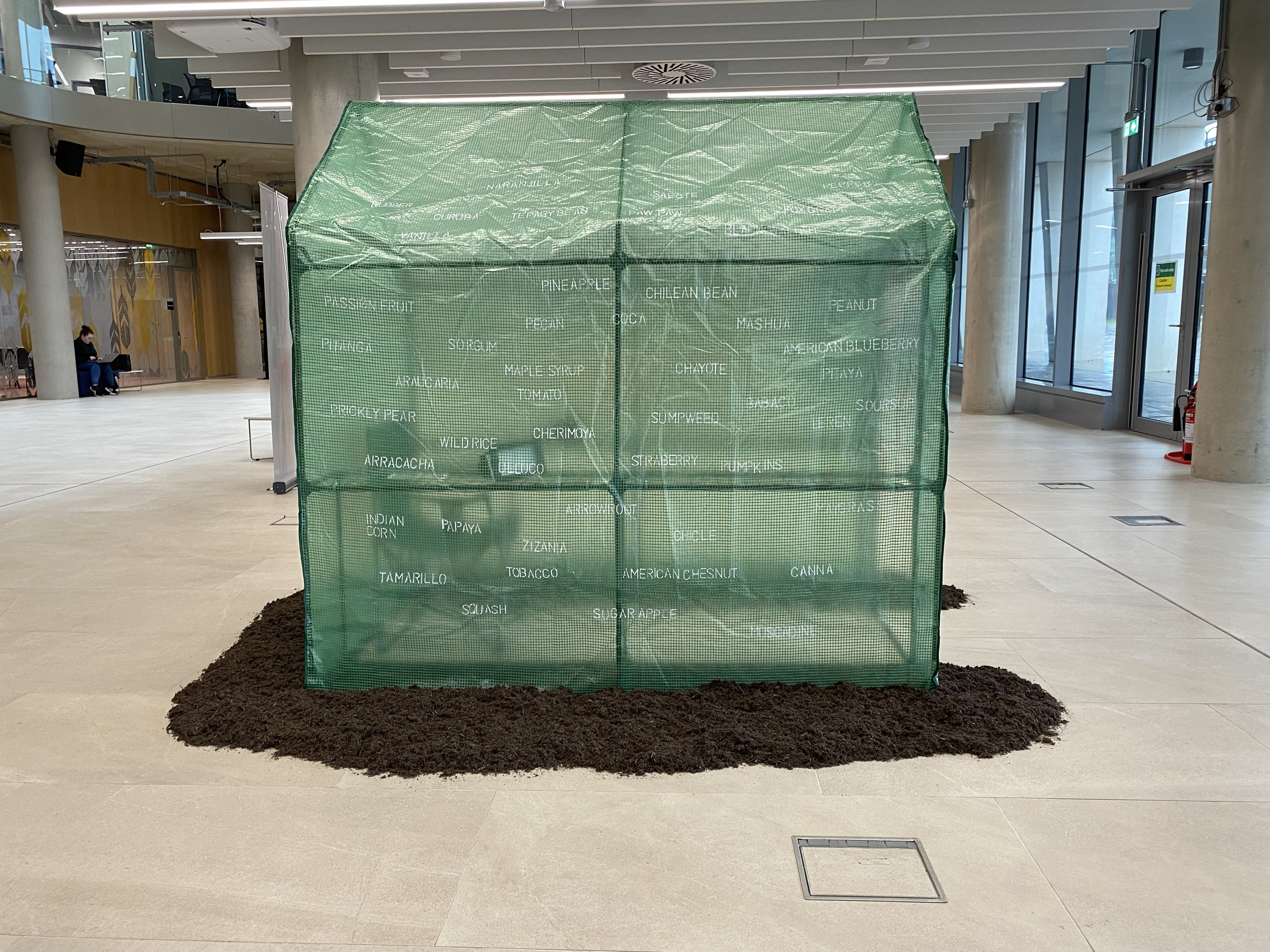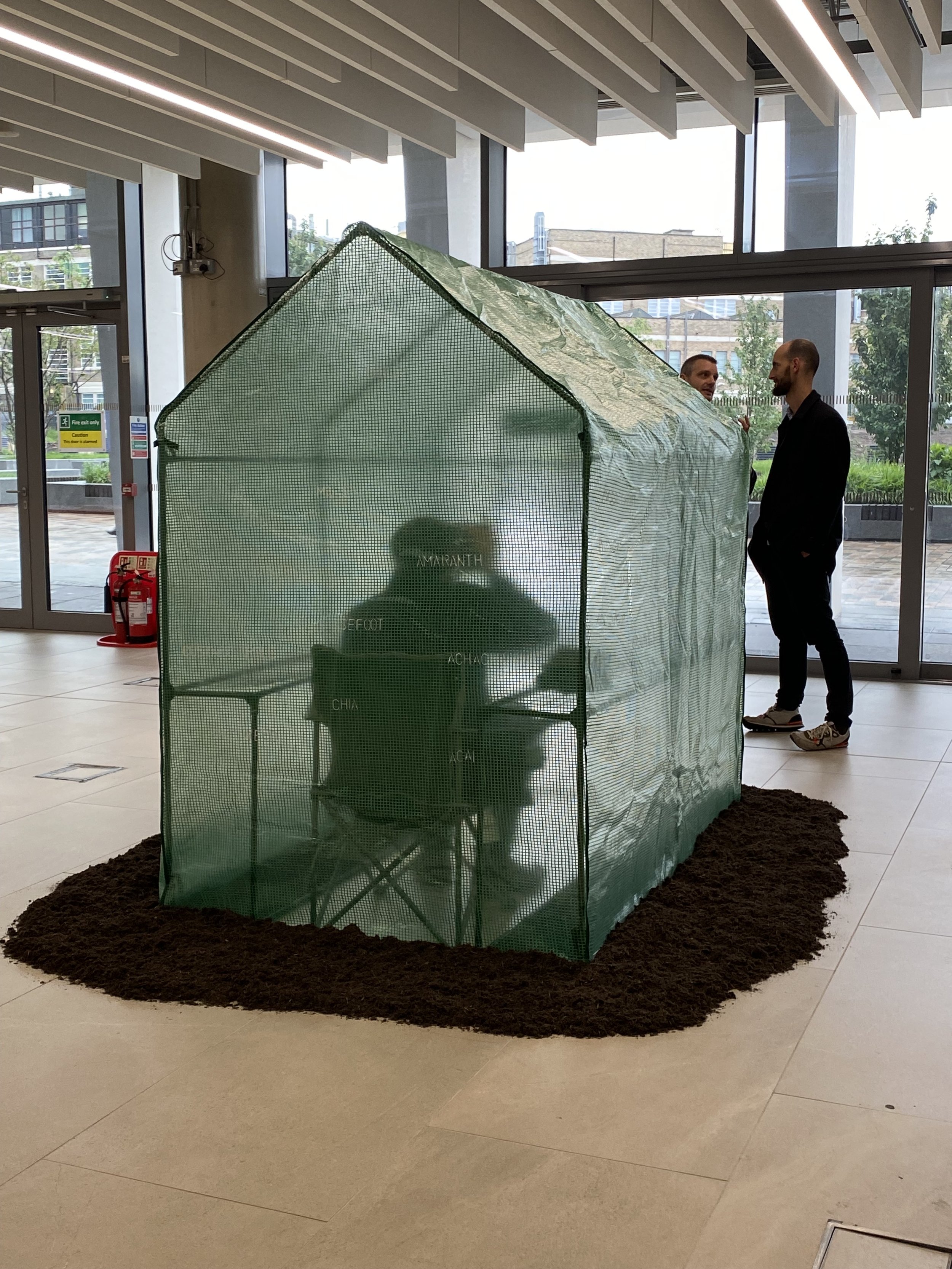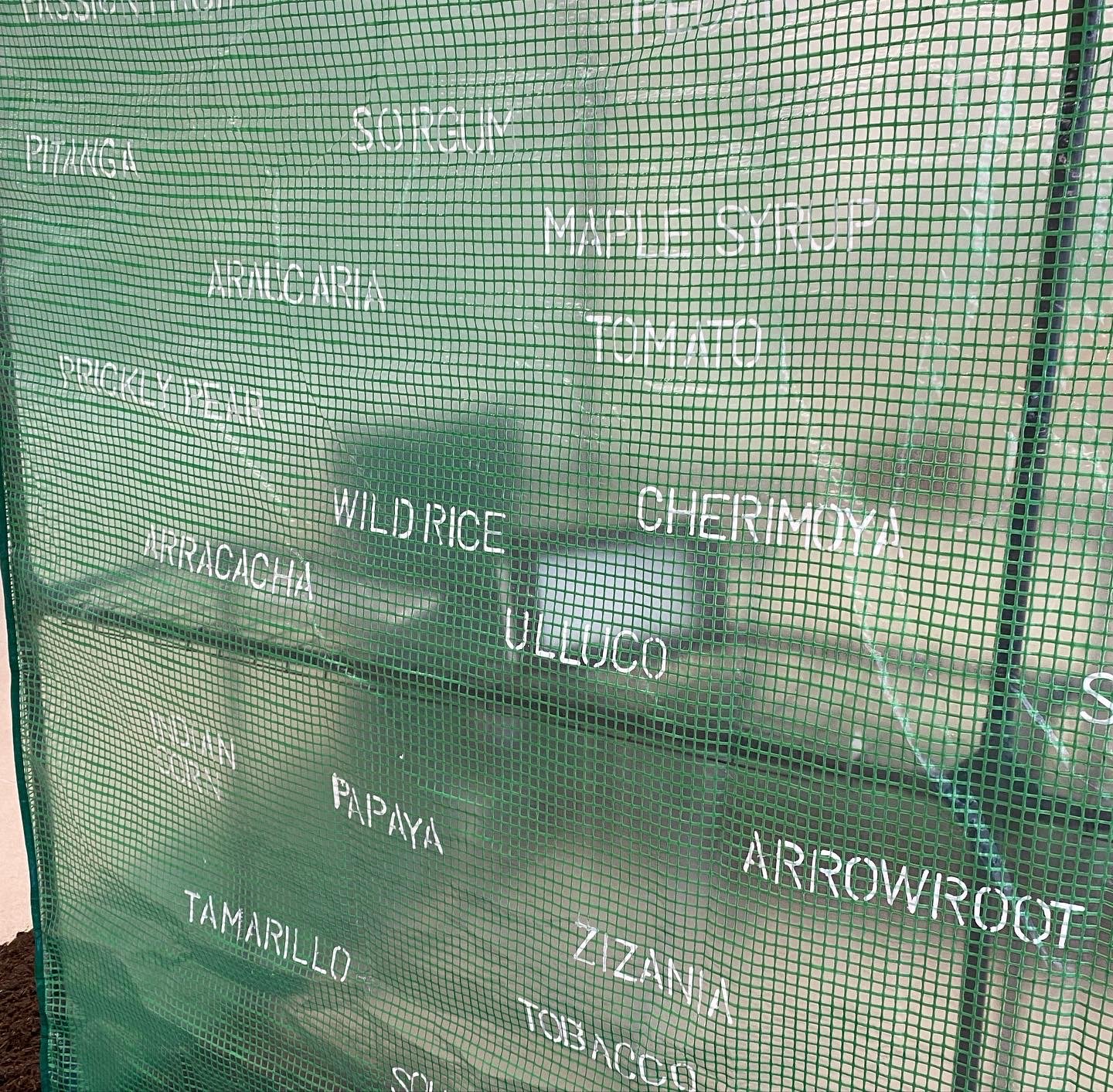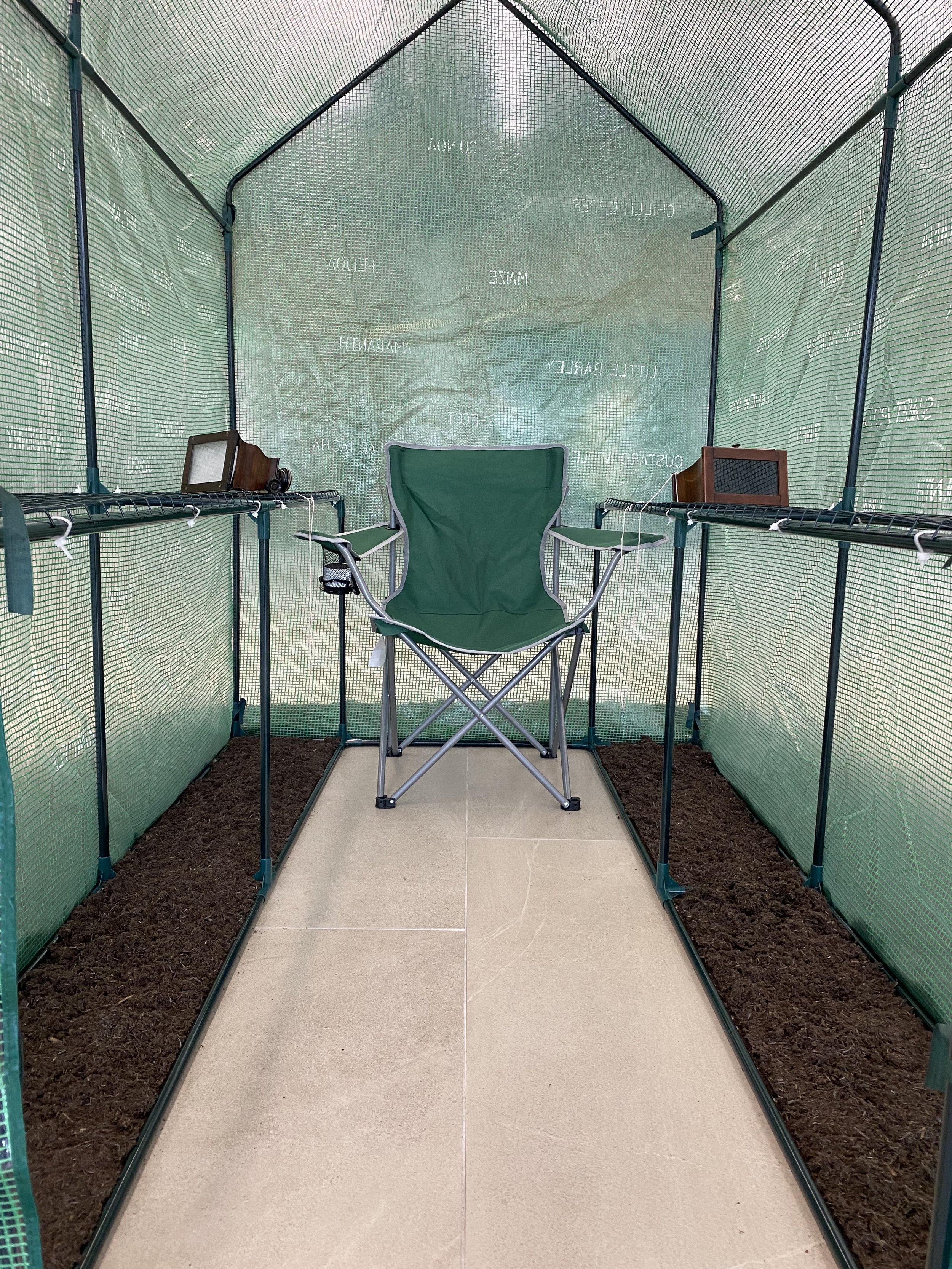The Green Threads of Our Foodways
"The Green Threads of Our Foodways" is an art installation designed by Désirée Coral, in which the work of other two artist are featured in two victorian stereoscopes.
This pieces is the result of a research project between the Mexico and Scotland, organised by the Food Sovereignty Network. Curated by Tommaso Ranfagni.
The Green Threads of Our Foodways is an immersive installation which features a pair of stereoscopes placed inside a greenhouse. On the external part of the green house in white ink, the names of crops domesticated in the Americas, part of our food and agricultural systems have been written from top to bottom. Inside a looping sound of the voice of an old English man reading a text of Francis Bacon about agricultural practices reverberates as sound background. Originated in England in 1838, the stereoscope gained popularity as a means of global exploration. However, its ability to create a convincing illusion of reality through slides facilitated the construction of colonial narratives. This transformed the stereoscope into a tool for perpetuating colonial ideologies, often reducing colonised peoples and cultures to stereotypes. Leveraging the symbolism of the stereoscope, Désirée transforms details from Mari and Asunción's artworks into slides, showcasing food deeply ingrained in indigenous American traditional culture. This presentation offers viewers a distant perspective on products often consumed in the Global North without full awareness of their origins. This historical fracture in our foodways is symbolically situated within a greenhouse, serving as a poignant symbol of the "greenwashed" narrative surrounding food production. Expanding on this narrative, the sound piece within the greenhouse delves into the repercussions of industrialisation and chemical-based agricultural practices, which, despite being touted as agroecological solutions for fostering better and more sustainable food systems, have proven to be ineffective. With an engaging and thought-provoking approach, 'The Green Threads of Our Foodways' explores diverse perspectives and historical approaches concerning food, agriculture, recipes, and commercial exchanges, aiming to stress how each of these elements constitutes an integral component of the intricate web that supports our food system.
Text by Tommaso Ranfagni - Art Historian and Curator
